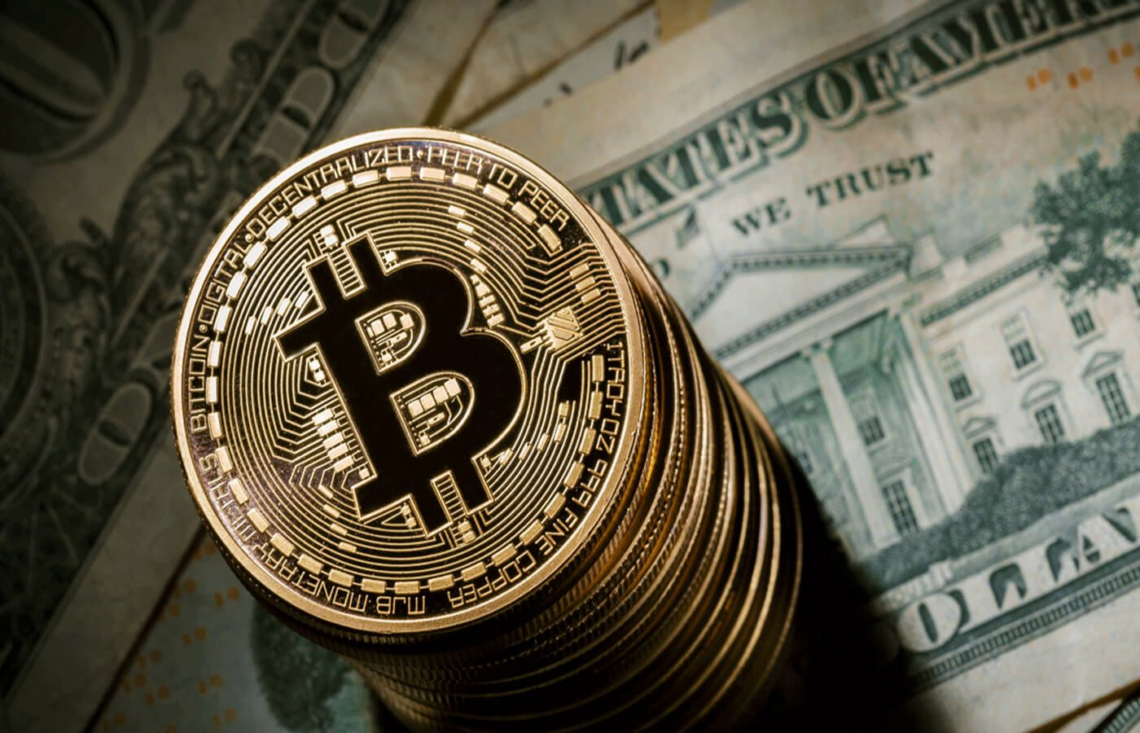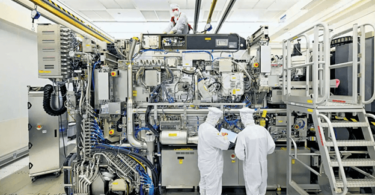The Nvidia Killer is Here
Sponsored
Artificial intelligence could have already made you a millionaire… Because back in 2013, researchers from Stanford University built the “world's largest virtual brain” with Nvidia chips. This single event marked the beginning of the chipmaker's reign as the “King of AI.” You could've raked in 12,035% gains had you bought Nvidia shares when this story became public. That's enough to turn a $9,000 stake into more than $1 million. But there's no reason to beat yourself up for missing out on this life-changing opportunity. Today you have a second shot at six- or even seven-figure gains. Because there's a new player in town… One that's set to dethrone Nvidia. This off-the-radar company from California is about to release an AI chip that's superior to Nvidia's technology. I'm talking about a 100x performance boost. Access to this kind of chip is still highly restricted. The U.S. Air Force is one elite client that was allowed to use it early. But soon it will be available to the mainstream. And if you position yourself BEFORE this chip reaches the mass market, you could turn every $1 into $120… Just like early Nvidia investors did. I just published a brand-new presentation on this unique opportunity. Access is instant and free. Get the full story here while there's still time.
Ever looked at Bitcoin (BTC) and thought, “Hmm, intriguing — but is it for me?”
Well, if you've got $10,000 of investable cash looking for a home, Bitcoin might just be that quirky neighbor you'd like to know better. With the crypto world buzzing like a shaken beehive after the Securities and Exchange Commission (SEC) gave the nod to 11 spot-price Bitcoin ETFs, it's time to peek over the fence and see what all the fuss is about.
Here are three leading reasons why making a significant investment in Bitcoin could be the adventure your portfolio didn't know it needed.
ETFs are rolling out the welcome mat for Bitcoin
Gone are the days when investing in Bitcoin felt like trying to join an exclusive club with a complicated handshake. Thanks to the SEC's approval of 11 spot-price Bitcoin ETFs in January, the doors to the Bitcoin market have swung wide open, inviting everyone to the party.
This move has simplified the process of investing in Bitcoin, making it as easy as buying a stock through your favorite brokerage account. If your investment account doesn't offer trading of Bitcoin and other cryptocurrencies, ETFs like the Fidelity Wise Origin Bitcoin Fund (FBTC) or iShares Bitcoin ETF (IBIT) serve almost exactly the same purpose in the familiar form of a stock-like investment vehicle.
As a result, we're seeing a surge in demand, as both seasoned investors and curious newcomers are drawn to the simplicity and potential of Bitcoin investments. It's like Bitcoin just got a major social upgrade, and now it's the talk of the town. The iShares ETF already holds $11.1 billion of Bitcoin in its digital vault and Fidelity's ETF isn't far behind with a Bitcoin-based net asset value (NAV) of $7 billion.
The inflow of old-school dollar investments in these ETFs is reshuffling where the limited supply of Bitcoin coins calls home. It's a fresh (and potentially very large) source of active Bitcoin demand that didn't exist before Jan. 12.
A halving event is on the horizon
Bitcoin operates on a model of programmed scarcity, with a halving event every four years that cuts the mining reward in half. This approach enforces Bitcoin's all-time supply limit of 21 million coins, slows down short-term inflation in a stepwise manner, and basically requires higher coin prices over time in order to make the mining business economically worthwhile.
This scarcity mechanism has historically led to significant price increases, as supply constraints meet growing demand. With the next halving event scheduled for late April 2024, we're looking at a potential repeat of this pattern.
The period leading up to a halving event has often been ripe for investment, anticipating the supply squeeze and subsequent price rally. A skyrocketing price surge has followed over the next 12 to 18 months in every cycle so far. Yes, things are different this time thanks to the addition of Bitcoin ETFs — but I don't expect that new ingredient to hamper Bitcoin's price gains at all. If anything, you already saw how the ETFs should accelerate Bitcoin's long-term price increases.
Disruption in financial systems: Bitcoin's role
The financial landscape is undergoing a transformative shift, with decentralized finance (DeFi) and Web3 applications at the forefront of this change.
As traditional financial systems show signs of vulnerability and inefficiency, the stage is set for a dramatic overhaul. Bitcoin is inviting every app developer to rely on the leading value-storage cryptocurrency's broad shoulders whenever monetary value needs long-term storage.
The potential of Bitcoin extends beyond a store of value, too. It is at the heart of a burgeoning ecosystem that promises to redefine how financial transactions are conducted, with lightning-fast transaction speeds and low fees.
This long-lasting drama of disruption makes Bitcoin not just a beneficiary but a leading actor in the narrative of financial innovation.
Why $10,000 in Bitcoin could be a smart move
Investing in Bitcoin isn't just about trying to catch the next price increase; it's about recognizing the shifting paradigms of finance and technology. The increased demand from ETFs, the upcoming halving event, and the potential for Bitcoin to play a key role in the disruption of traditional financial systems present a potent mix of reasons to consider such an investment.
Whether you're a seasoned crypto enthusiast or a curious newcomer to digital assets, this moment in time offers a unique blend of opportunity and momentum. Investing $10,000 in Bitcoin now could not only yield attractive returns over the next year or two but also position you at the forefront of a financial revolution.
The crypto-based financial sea change is gaining momentum, and I don't see how traditional bankers and reactionary governments can stop it. Digital currencies look helpful to ordinary people, equalizing economies with unstable banking systems, and arguably inevitable in the long run. I can't guarantee that Bitcoin will play a leading role forever, but the largest and most entrenched digital coin stands head, shoulders, and bulging biceps above every challenger so far.
As with any investment, there are risks, and it's essential to do your homework and understand your risk tolerance. Past results can never guarantee future returns, and every cycle of the freeze-and-thaw cycle of crypto winters is different. But for those looking to diversify into crypto, Bitcoin presents arguments too compelling to ignore.
And if you're looking for your first dance with a digital currency, Bitcoin has no equal in terms of long-term soundness. You should probably start here and consider some Bitcoin alternatives next, as you build a diversified crypto portfolio for the long haul.
Sam Altman's Secret Plan to Take Down NVIDIA
Sponsored
A huge bombshell has emerged in the OpenAI saga with CEO Sam Altman… OpenAI, the startup behind ChatGPT, recently witnessed a whirlwind of events surrounding Altman. In just five short days, he was dismissed by the board, hired by Microsoft, and then reinstated as the head of OpenAI. However, Bloomberg reports that prior to his departure from OpenAI, Altman was actively seeking to secure billions in funding for a brand new startup company… A secretive venture codenamed “Project Tigris.” “Project Tigris” is NOT focused on developing a new app or another version of ChatGPT. Its mission, spearheaded by Altman, revolves around the creation of a chip company… One that's poised to rival Nvidia, the chipmaker now worth over $1 trillion thanks to the AI boom. You see, Nvidia's chips were originally designed to serve just one purpose… To create ultra-realistic graphics in games such as Call of Duty and Counter-Strike. In other words… Nvidia's technology was never meant to power AI. Sam Altman's vision involves producing chips specifically designed to handle high-volume AI workloads. And are also cheaper than Nvidia's. In short, this was Sam Altman's Plan to Take Down Nvidia… However, what many investors might not be aware of is the emergence of a little-known company poised to achieve what Altman could not… This firm has beaten Altman to the punch with a patent-protected chip specifically designed to run AI on. This makes it much more powerful than Nvidia's tech, which was originally designed for video gaming. This chip boasts a 100x performance boost. The U.S. Air Force, Cisco, and Raytheon are just some of this firm's early elite clients. But soon this chip will be available to the mainstream… And if you position yourself before it reaches the mass market, you could turn every $1 into $120… Just like early Nvidia investors did. I just published an urgent presentation on this unique opportunity. Inside, I'll explain all the details and how you can position yourself today. Get the full story here while there's still time.












